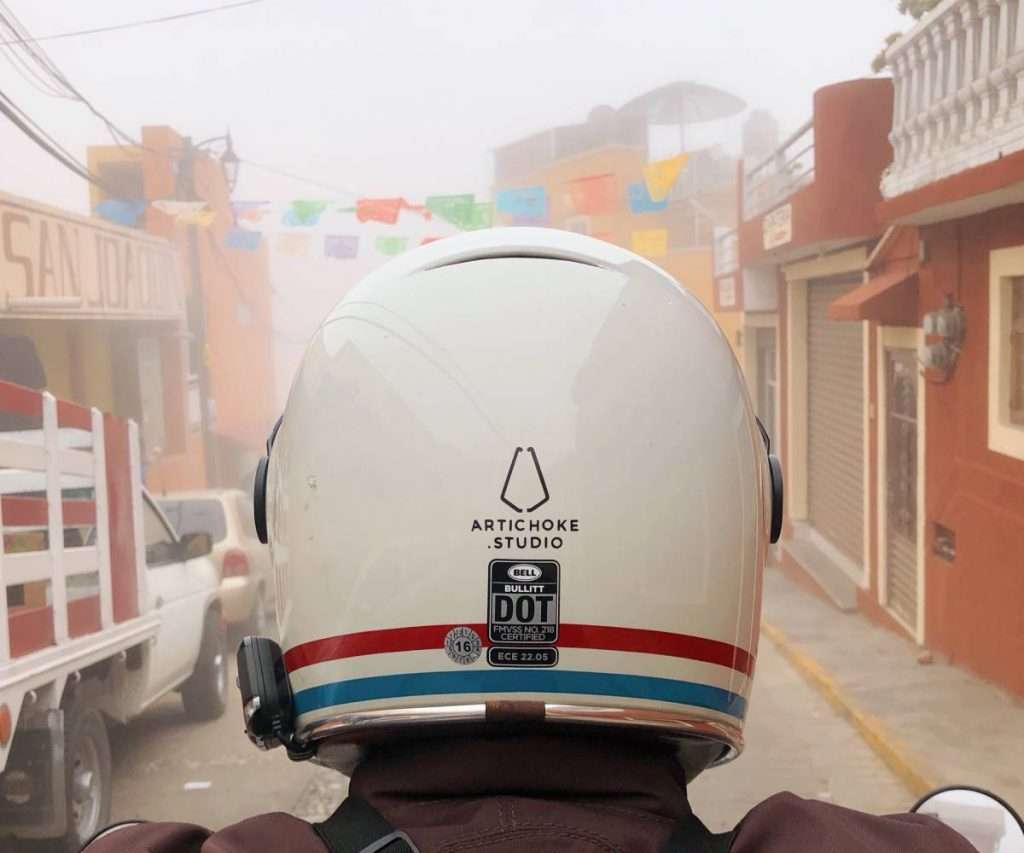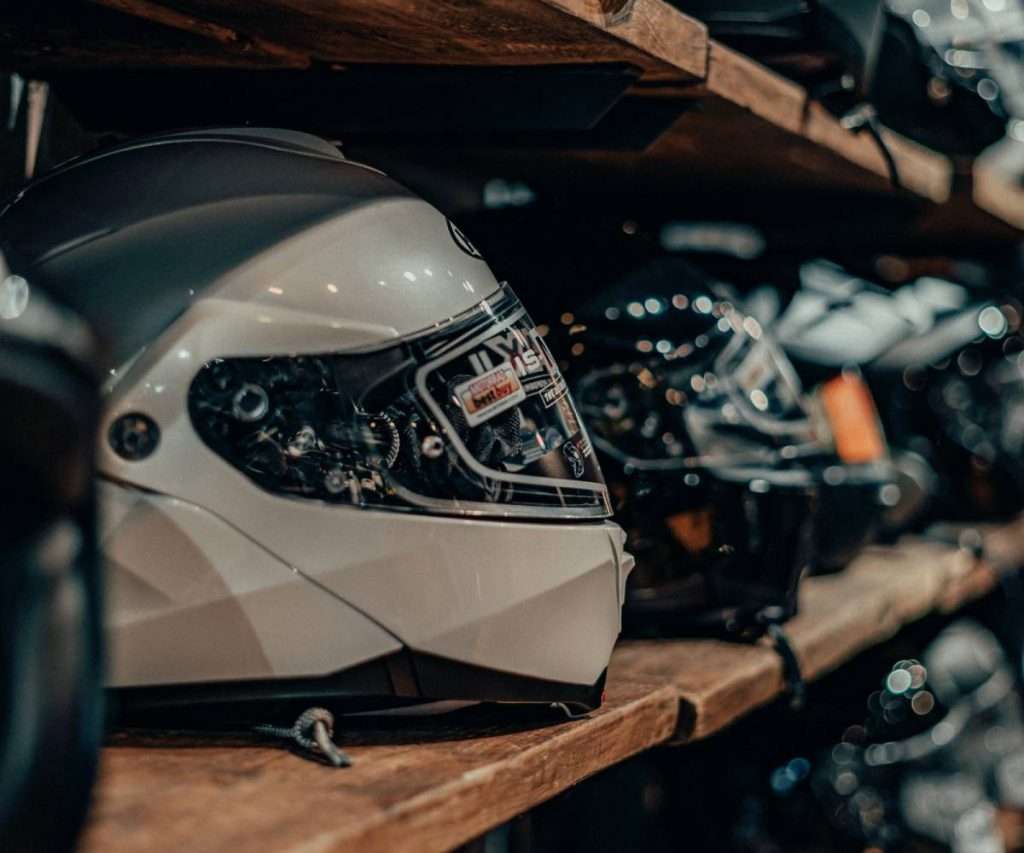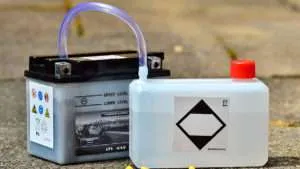Contents
Safety-conscious motorcycle and ATV riders know that a helmet is THE single most important piece of equipment they can wear while riding. Modern helmets are designed to protect the brain in a crash, as long as they are still in good condition. How can a rider know if his helmet is still in good shape?
You can tell if a motorcycle helmet is in good shape by checking the outer shell for cracks or indentions, examining the inner core for material degradation and compression, and knowing the age and usage history of the helmet.
For safety’s sake, riders need to make sure their helmet is in tiptop shape while cruising in the neighborhood or down the highway. Read on for ways to know if your helmet is still in good shape.
Determining the Condition of a Motorcycle Helmet

The motorcycle helmets on the market today must meet stringent safety regulations set forth by the National Highway and Traffic Safety Administration (NHTSA). FMVSS 218 establishes a set of minimum performance requirements that manufacturers must adhere to when designing and manufacturing motorcycle helmets.
All current helmets satisfy these standards when new. However, as helmets age, see frequent use, or are involved in a crash, their integrity can be compromised. Sometimes the damage is evident while other times it may be more difficult to determine the condition of the helmet.
To know how you can tell if your helmet is still in good shape, first you need to understand its components.
- Outer Shell: Typically made of durable materials such as plastic, fiberglass, or carbon, the outer shell is designed to spread out the energy that occurs during impact and protect the head from penetrating objects.
- Inner Core: Also known as the EPS (Expanded Polystyrene), this foam layer absorbs energy from an impact or hit and cushions the brain from moving excessively within the skull.
- Straps: Straps keep the helmet in place correctly on the head.
- Face Shields: These protect a rider’s face from flying objects and wind.
These components play a key role in determining whether or not your helmet is in good, usable condition or if it should be replaced.
Examine the Outer Shell

The hard outer shell of a motorcycle helmet is the first place to check for indications of the helmet’s condition. This shell should be smooth and free from cracks. There should be no brittle edges or signs that the shell material is going to flake or pop-off.
Because the outer shell takes the initial brunt of a crash or big impact, any compromise in its condition, such as a small crack or bubble, can cause the helmet to fail and result in a serious head injury for the rider.
Small chips in the paint or design of the outer shell are not usually a concern. These can happen as you carry the helmet and accidentally bump against things. If you’re not sure whether a chip is just a chip or something more, Moto Legends suggests doing a simple finger test to check for shape deformation or the presence of material fibers around the defect. Evidence of either suggests the helmet is no longer in good enough condition to use.
Assess the Inner Core

While damage to the outer shell is usually fairly obvious, the inner core’s location may mask damage that has occurred in less visible spots. Frequent use results in the inside of the helmet being exposed to sweat, moisture, and hair products. All of these can accelerate the deterioration of the EPS core without leaving visible evidence.
Signs that the inner core is no longer in good shape include:
- Flakes in your hair or on your shoulders
- Obvious cracks or compressed spots or in the EPS liner
- Discoloration or signs of moisture buildup
Cracks in the EPS
Since the EPS liner is the heart of the helmet, it’s important to check it regularly for any issues. On many modern helmets, the EPS core is painted black or gray so that small cracks or fissures in the liner stand out.
Compression in the EPS
Sometimes compression is apparent on the head-side of the liner. There are times, however, when compression occurs between the EPS and the outer shell, even though the outer shell still appears normal. These compressed areas are difficult to see and you will have to consider other factors like the helmet’s age or involvement in a crash.
Moisture in the EPS
The EPS will absorb moisture over time and can become hardened. As it hardens, the EPS may shrink which can affect the amount of energy it’s able to absorb on impact. You may notice this if your helmet starts to fit more loosely.
Check the Condition of the Strap and Shield
Helmets straps are designed to help the helmet stay snugly on the rider’s head. They are exposed to all kinds of weather conditions, and over time, the buckles or locks may rust and corrode. Plastic straps may become brittle and tear or crack.
If you have trouble buckling the strap in place or securing it tight enough for a snug fit, then it’s time to replace the strap, and maybe the whole helmet depending on the condition of its other components.
Face shields that are in good shape will show no signs of cracking or fogginess. The rider should be able to easily adjust the face shield as needed. Balky pivot points indicate excessive wear or a need for lubrication.
Determine the Age of the Helmet

For safety reasons, many manufacturers suggest that helmets should be replaced every 3-5 years. Most helmet makers enforce a 5-year expiration date. They base this on the realization that even barring the helmet being involved in a crash, there can still be significant wear and tear and exposure to weather that can degrade the helmet’s materials and structure.
If your helmet is more than 5 years old, it’s time to seriously consider replacing it with a newer model.
No products found.
Final Thoughts
Helmets that are properly treated and cared for can last for several years. Yet there does come a time when age and frequent use can take their toll on the different materials that make up the helmet.
You should periodically examine your motorcycle helmet for signs that it’s time to replace this vital piece of riding equipment. You should always act on the assumption that a helmet involved in a crash has been compromised and needs to be replaced.


 Is Your Motorcycle Battery Dead? 8 Symptoms to Look For
Is Your Motorcycle Battery Dead? 8 Symptoms to Look For  Are Bluetooth Helmets Worth It? The Honest Answer
Are Bluetooth Helmets Worth It? The Honest Answer  Why Your Bike Helmet Looks Huge (and What to Do)
Why Your Bike Helmet Looks Huge (and What to Do)  How to Pick the Best Motorcycle Helmet
How to Pick the Best Motorcycle Helmet